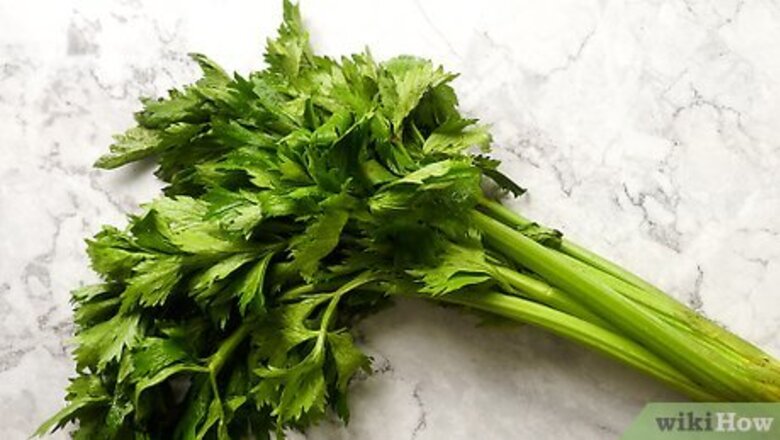
views
Preparing the Celery for Freezing

Choose the right stalks. When you're planning to freeze celery, it helps to start with the best stalks. Select those that are crisp and tender because they'll be more likely to freeze well. Avoid stalks that have coarse strings when you're freezing celery.

Wash and trim the celery. After you've selected the celery stalks that you plan to freeze, clean the stalks thoroughly. Run them under cool water and scrub the surface with a vegetable brush to remove any residue. Rinse them again under cool water, and use a sharp knife to trim the base of each stalk and any strings that might be hanging off the ends. If you notice that any portions of the celery stalks are discolored, trim those away as well.
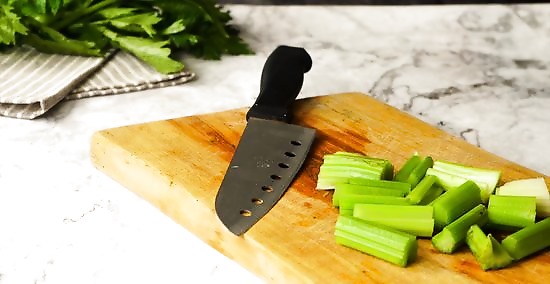
Chop the celery to your desired length. Once the celery stalks are clean, use the knife to cut them to your desired length. If you're not sure what recipes you plan to use the celery for in the future, chopping them into 1-inch (2.5-cm) pieces is usually a good size for most dishes. It can be difficult to chop celery stalks after they've been frozen, so it's best to take the time to chop them now even if you aren't exactly sure what size is right.
Blanching the Celery
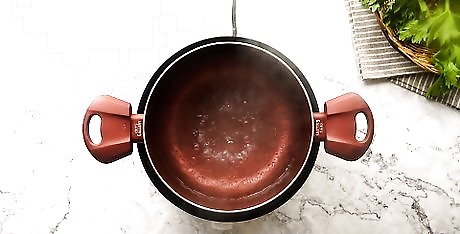
Boil a large pot of water. Place a large stock pot on your stove, and fill it with enough water to cover all of the celery that you're freezing. Turn the burner to high, and allow the pot to come to a full boil. When it comes to deciding how much water to add to the pot, using 1 gallon (3.8 L) for every pound (454 g) of celery is a good rule of thumb. If you don't plan to keep the celery in your freezer for more than two months, you don't necessarily have to blanch it before freezing. It will help preserve the flavor more effectively, though, so you may want to do even if you plan to use it within 8 weeks.
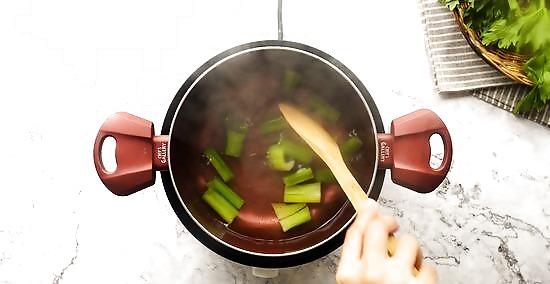
Cook the celery for several minutes. Once the water is boiling, place the chopped celery in the pot. Give the water a good stir after adding the celery to ensure that it's all submerged. Let the celery cook in the boiling water for 3 minutes. Placing the celery in a boiler basket before adding it to the water makes it much easier to add it to and remove it from the water. Set a timer when you place the celery in the water so you're sure not to overcook it.

Remove the celery from the boiling water and transfer it to cold water. When the celery has cooked for 3 minutes, take it out of the boiling water. Immediately, transfer it to a large bowl of ice water to stop the cooking process. Let it sit in the cold water for about 3 minutes. If you don't want to create an ice water bath for the celery, you can place it in a colander and set it under cold running water to cool it as quickly as possible.
Freezing the Celery
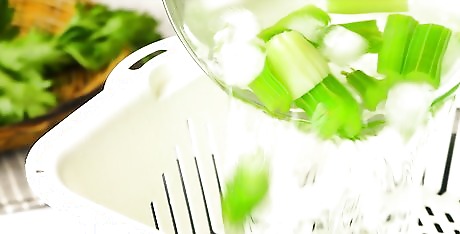
Drain and dry the celery. After you've cooled the celery, dump the bowl of cold water into a colander to drain the chopped celery. Shake the colander well to remove all of the excess moisture, and then blot the celery with a clean towel or paper towel to dry it thoroughly. Be sure to dry the celery carefully. If there is excess moisture on the pieces, it can ruin the celery when you freeze it.
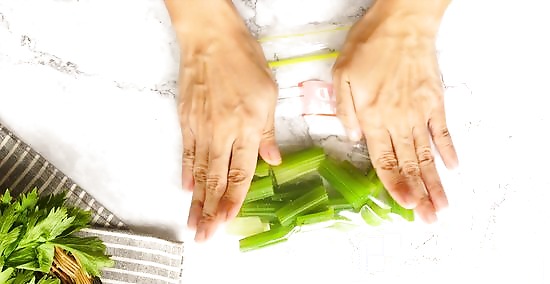
Place the celery in a freezer-proof container. When the celery is properly drained and dried, divide it into ½ pound (227 g) portions. Transfer it to freezer-proof containers, such as plastic containers or plastic freezer bags, so it's ready to freeze. If you're using a plastic container, make sure to leave room inside for the celery to expand. If you're using a freezer bag, make sure to press all of the air out before sealing it.

Label the celery container and place it in the freezer. Once you have the celery in the freezer containers, add a label with the contents and date so it's easy to find and use by the right time. Place the celery in your freezer for use at a later date. Use your frozen celery within 8 to 12 months.




















Comments
0 comment